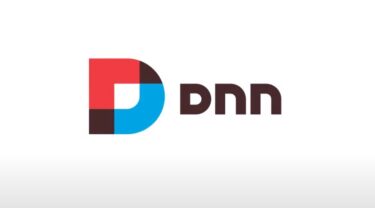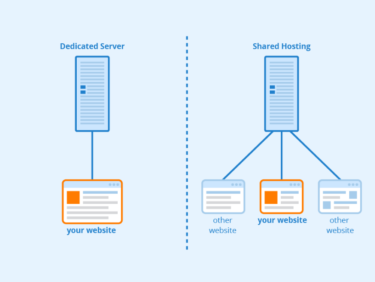Logging mechanisms serve as invaluable assets for any software system, particularly for web servers like IIS 8.5. One powerful feature that elevates its functionality is integration with Event Tracing for Windows (ETW).
This article serves as a comprehensive guide for developers interested in understanding the inner workings and optimization of ETW logging within the IIS 8.5 architecture. It aims to offer actionable insights on how to elevate system performance, tackle operational issues, and fortify security measures.
The Fundamentals of Event Recording Mechanisms in IIS 8.5
Event Recording for Windows (ETW) serves as a cornerstone for the Internet Information Services (IIS) 8.5 server’s diagnostic infrastructure. Its utility extends far beyond basic functionality:
- System Diagnostics: This aspect of ETW is central for evaluating both system activities and performance indicators. It provides a data-driven view of how resources like CPU and memory are being allocated and utilized;
- Security Auditing: The feature takes on added significance when you factor in its ability to oversee access control mechanisms, flagging any suspicious or unauthorized activities;
- Error Monitoring: ETW can actively track down any operational inconsistencies or system glitches, making it easier to fix them in the initial stages.
ETW’s real-time data accumulation and logging features set it apart as an exceptional kernel-level tracing system. Its high efficiency and minimal system footprint make it a go-to choice for administrators and developers who prioritize performance.
The Crucial Nature of Configurations in ETW
When it comes to Event Recording for Windows (ETW) in the IIS 8.5 ecosystem, the significance of configurations cannot be overstated. Various aspects require meticulous planning:
- Data Capture Parameters: Decision-makers must delineate which metrics hold importance for logging. Variables like error frequency, server latency, and resource engagement are often monitored;
- Log Destinations: There are multiple options for storing logs, ranging from an internal disk to a cloud-based data repository. The choice will depend on organizational needs and compliance requirements;
- Frequency of Logging: Striking a balance between exhaustive logging and system performance can be challenging. Admins need to decide how often the system should capture log entries without causing system overload.
Effective configuration administration is crucial as it permits optimal resource utilization while capturing comprehensive diagnostic information.
Expanded: Diagnostic Problem-solving with ETW Logs in IIS 8.5
For developers and system administrators, troubleshooting remains an integral task, and ETW logs can be an invaluable resource. Their applications include:
- Spotting Performance Issues: These logs can meticulously record metrics such as CPU engagement, memory distribution, and even I/O operations, making it easier to pinpoint performance hindrances;
- Debugging Errors: In addition to capturing performance metrics, ETW logs can chronicle detailed system call traces, which can be crucial for diagnosing problematic code segments;
- Security Oversight: The logs can also act as a surveillance system, identifying any irregular patterns of activity that might indicate a security vulnerability.
Reading ETW logs with finesse can streamline the process of identifying and addressing various system issues, thus ensuring more effective problem resolution.
Strategies for Ensuring Log and Data Security
As ETW logging serves a fundamental role in monitoring and diagnostics, the protection of these logs gains immense importance. A compromised log can yield extensive security risks. Methods for secure logging encompass:
- Data Ciphering: Encrypting the logs mitigates the risk associated with unauthorized data access;
- Role-Defined Access Permissions: Limiting log access to specific organizational roles helps ensure that only authorized personnel can review or modify them;
- Routine Backups: Taking periodic snapshots of logs is essential for safeguarding against unintentional data loss or hardware malfunctions.
Enhancing ETW Logging Functionality in IIS 8.5
One of the standout features of Event Tracing for Windows (ETW) within the IIS 8.5 environment is its inherent flexibility and capacity for extension. Developers and system administrators have several avenues for expanding upon the core capabilities:
- Tailored Event Tracking: While ETW’s built-in functionalities are robust, there may be specific activities or metrics that organizations wish to monitor. Developers have the latitude to craft custom code to capture these specialized occurrences;
- Incorporating External Tools: ETW’s architecture permits seamless integration with third-party solutions. Whether you are looking to incorporate more potent analytics engines or need alternative options for storing log files, multiple libraries and tools are compatible with the ETW ecosystem;
- Unified Data Compilation: For those looking to collate diagnostic information from various platforms or services, ETW allows for advanced data aggregation methods. By leveraging additional services, you can create a unified dashboard that presents an integrated view of overall system health and performance.
Navigating Regulatory Compliance with ETW Logging
Regulatory compliance is a critical concern for organizations, particularly when dealing with logging and data storage. ETW logs in the IIS 8.5 environment can be configured to meet various compliance requirements:
- Duration-Based Data Retention: Certain regulations stipulate the period for which log data must be preserved. In these cases, it’s crucial to configure ETW to retain logs for the specified durations;
- Geographical Data Storage: Data sovereignty is another pressing concern, especially for multinational organizations. ETW logging must be configured to store log files in locations that are in full compliance with jurisdictional or country-specific laws regarding data storage;
- Auditable Activity Records: Given that ETW logs can capture a wide array of system activities, they can serve as a reliable resource during audits. These logs can be configured to generate reports that meet the stringent criteria of compliance audits, serving as irrefutable documentation.
Practical Applications of ETW Logging in IIS 8.5 Environments
ETW logs are not just a theoretical tool for performance monitoring or compliance. In real-world settings, they find application in a multitude of scenarios:
- Monitoring High-Reliability Systems: In environments where system downtime is unacceptable, ETW logs serve as a vigilant monitor, continuously scrutinizing system performance in real time and generating alerts for any irregularities;
- Facilitating DevOps Processes: The agile nature of DevOps is significantly enhanced by incorporating ETW logs into Continuous Integration and Continuous Deployment (CI/CD) pipelines. This integration allows for automated diagnostic checks at different stages of software development and deployment;
- Analytical Reconnaissance: In instances of security breaches or other disruptive events, past ETW logs can be a treasure trove of information. They provide the capabilities to backtrack and analyze the actions leading up to an incident, offering valuable insights into its causes and potential prevention methods.
Through these practical applications and more, ETW logging proves itself to be an indispensable tool for maintaining, monitoring, and improving systems within IIS 8.5 configurations.
Conclusion
The utility of Event Recording for Windows in the context of IIS 8.5 is both diverse and significant. It serves an array of operational functions from system analytics to security vetting and debugging. Familiarity with its configurations and protective measures not only enhances performance but also bolsters security.
Additionally, understanding its extensibility, compliance implications, and practical applications makes ETW logging an indispensable skill set for developers and administrators. Therefore, mastering ETW in IIS 8.5 is not just beneficial but essential for those responsible for sustaining and enhancing web server functionalities.










